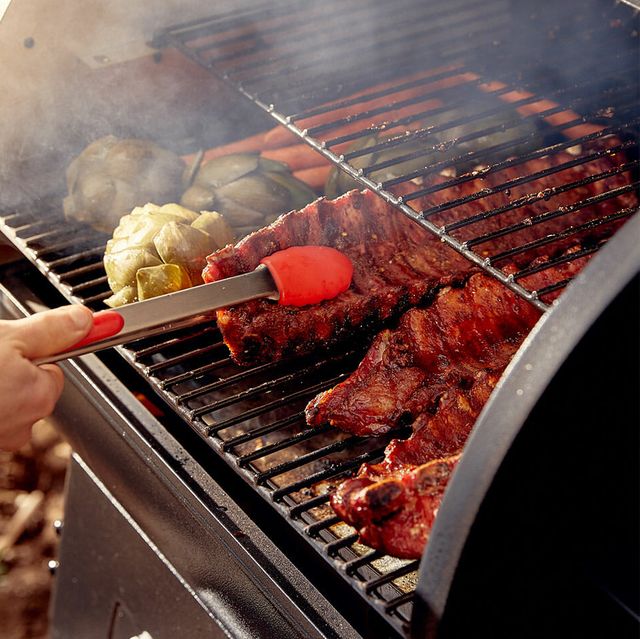It used to be that pellet grilling was for nerds. Invented in the ’80s by a guy who owned a heating company in Oregon, wood pellet grills are powered by electricity and fueled by wood pellets. An auger pushes compressed wood from a holding chamber on the side of the grill to a fire pot under the grates, where a temperature gauge and a fan work together to maintain a stable heat.
The first wood pellet grills, all made by Traeger Grills, did not seriously threaten the dominance of their gas and charcoal counterparts. Those days are gone. Here are four reasons why pellet grills are here for good.
Simplified Smoking
Whether would-be pitmasters want to admit it or not, part of the allure of barbeque is its inherent difficulty. Fires, fuel stacks, air flow, internal temperatures, ambient temperatures and humidity levels — all must be monitored for hours (sometimes days) on end. To some grillers, that sounds like a great use of a weekend. To others, a nightmare.
Pellet grills make things easier. Set the temperature, press “ignite” and wait ten minutes. Once it hits the target temperature, the grill’s onboard computer does all the monitoring for you, automatically adjusting fan speed and pushing pellets into the firepot as necessary. If you’re into barbeque for the flavor, not the craft, it’s the most efficient way to go — properly smoked meats and vegetables with minimal effort.
Legitimately Useful Smart Controls
Smart tech may feel anachronistic to the very analog nature of cooking meat over fire, but it’s immensely helpful in the pellet grill arena. Wood pellet grills monitor temperature in the firepot, ambient air temperature in the grill and internal temperature of the meat you’re cooking by default.
Today’s grills connect to your home’s Wi-Fi, and you connect to them via smartphone app, meaning you can control them even when you’re not connected to your home’s Wi-Fi (like, say, if you go on a quick beer run). And though you can operate the grill using the interface on the front of the grill, all the functions found there are available on the app, and a little more. Load recipes from your phone onto the grill and set it on cruise control and troubleshoot any grill performance issues that arise, too. It’s simple, non-invasive smart technology that you can use, or not use.
Surprising Fuel-Efficiency
A bag of wood pellets costs about $20. When cooking at smoking temperatures, these grills burn about a pound every two to three hours, which comes out to roughly $1 per hour of cook time and 50 hours of cook time per bag. For the sake of comparison, propane gas tanks are usually $30 for a full tank and $20 for refills. You’ll typically get 20 hours of cook time out of propane grills, even when cooking on low. Charcoal and lump coal are even less efficient.
Limited but Capable Grilling
Pellet grills aren’t perfect. The most legitimate complaint against them is their inability to create the quick char of their gas and charcoal brethren. That’s because wood pellet grills typically have a sheet of metal over the fire pot, thus they cook with indirect heat rather than the standard direct heat from traditional grills.
No wood pellet grill is capable of safely reaching the 800-plus temperatures of gas and charcoal. But newer grills from Traeger and companies like Green Mountain do show marked improvement. Both companies now make grills that meet or exceed 500 degrees at grate-level (they used to top out around 400 degrees). That’s ample energy to effectively sear a steak or pork chop. In short: it won’t keep up with the searing chops of a gas or charcoal grill, but it’s plenty capable in its own right.
















